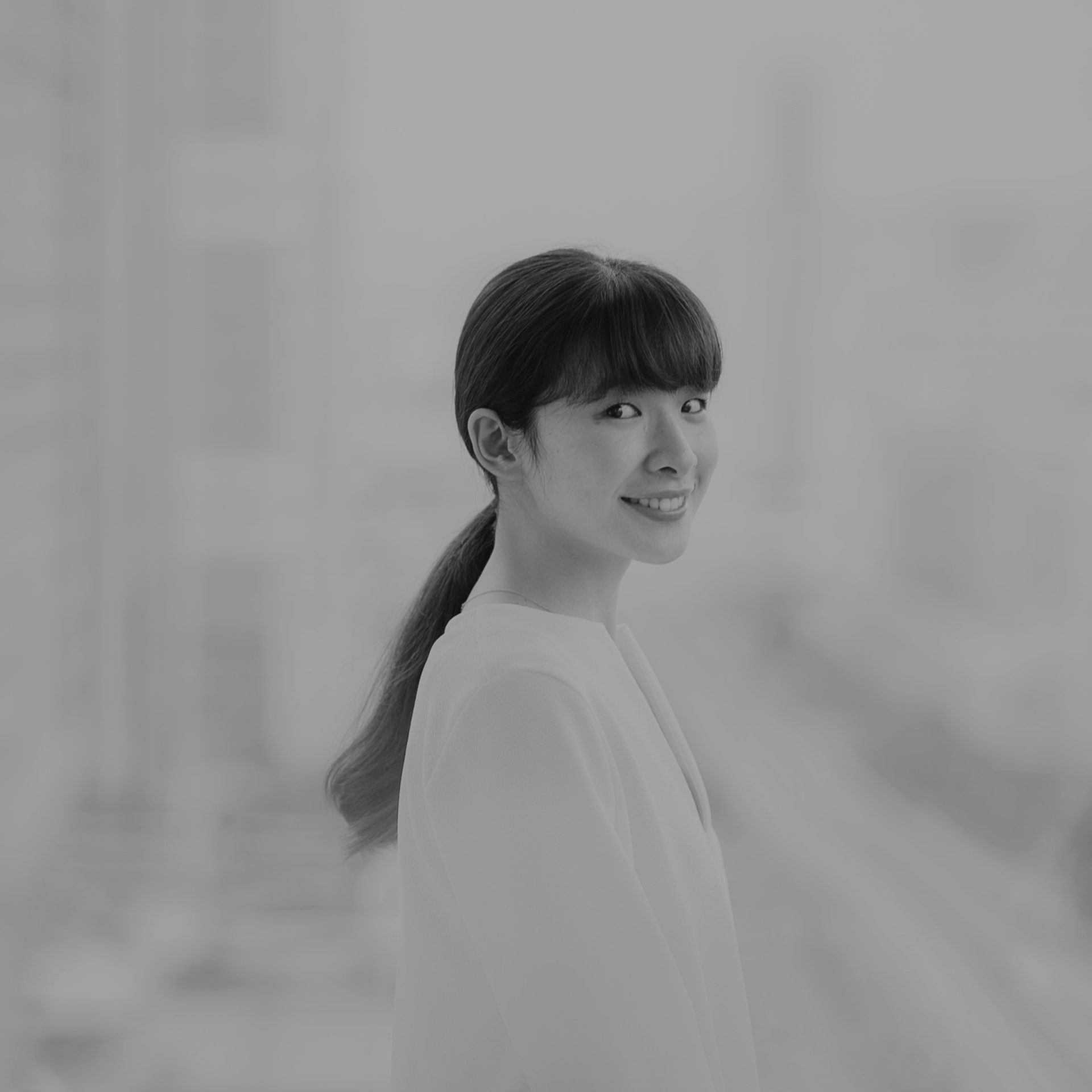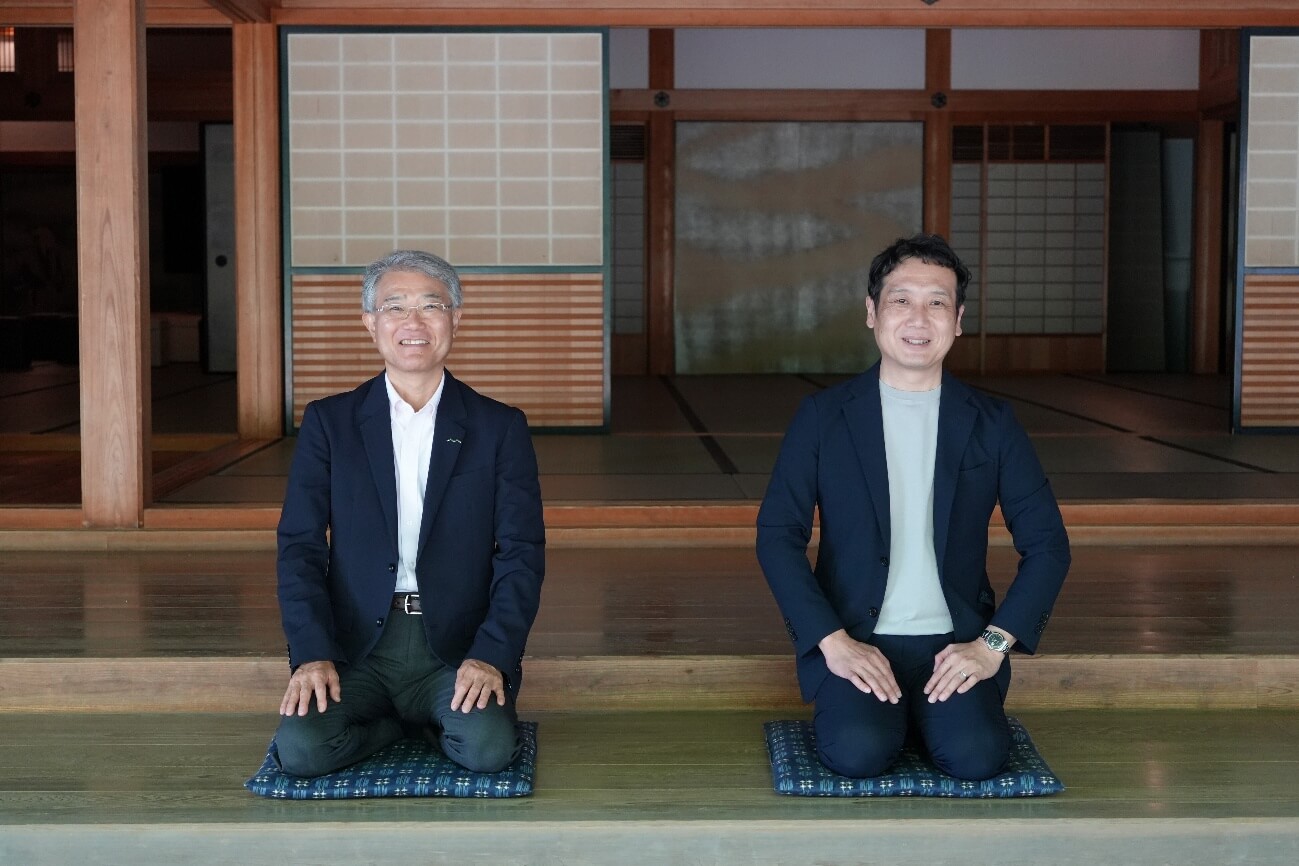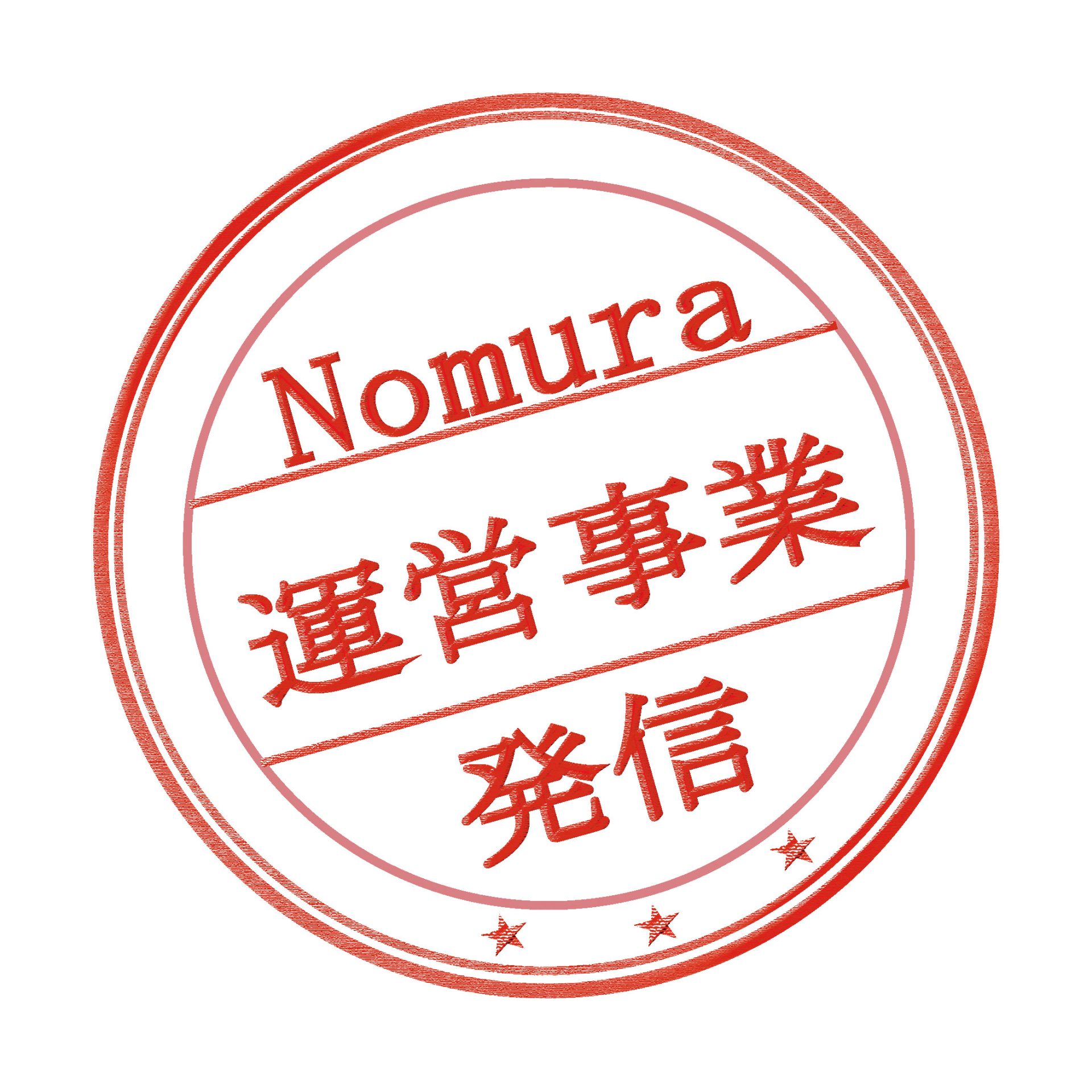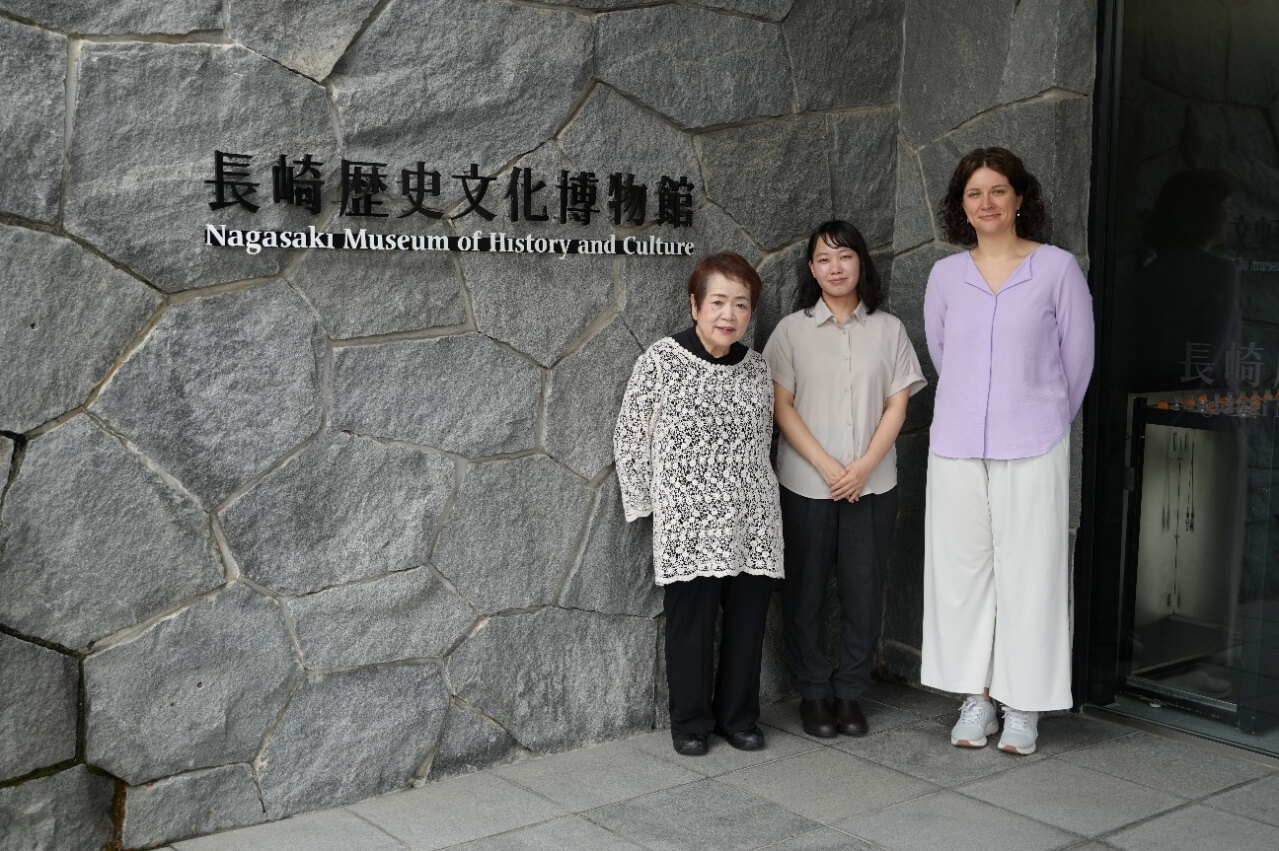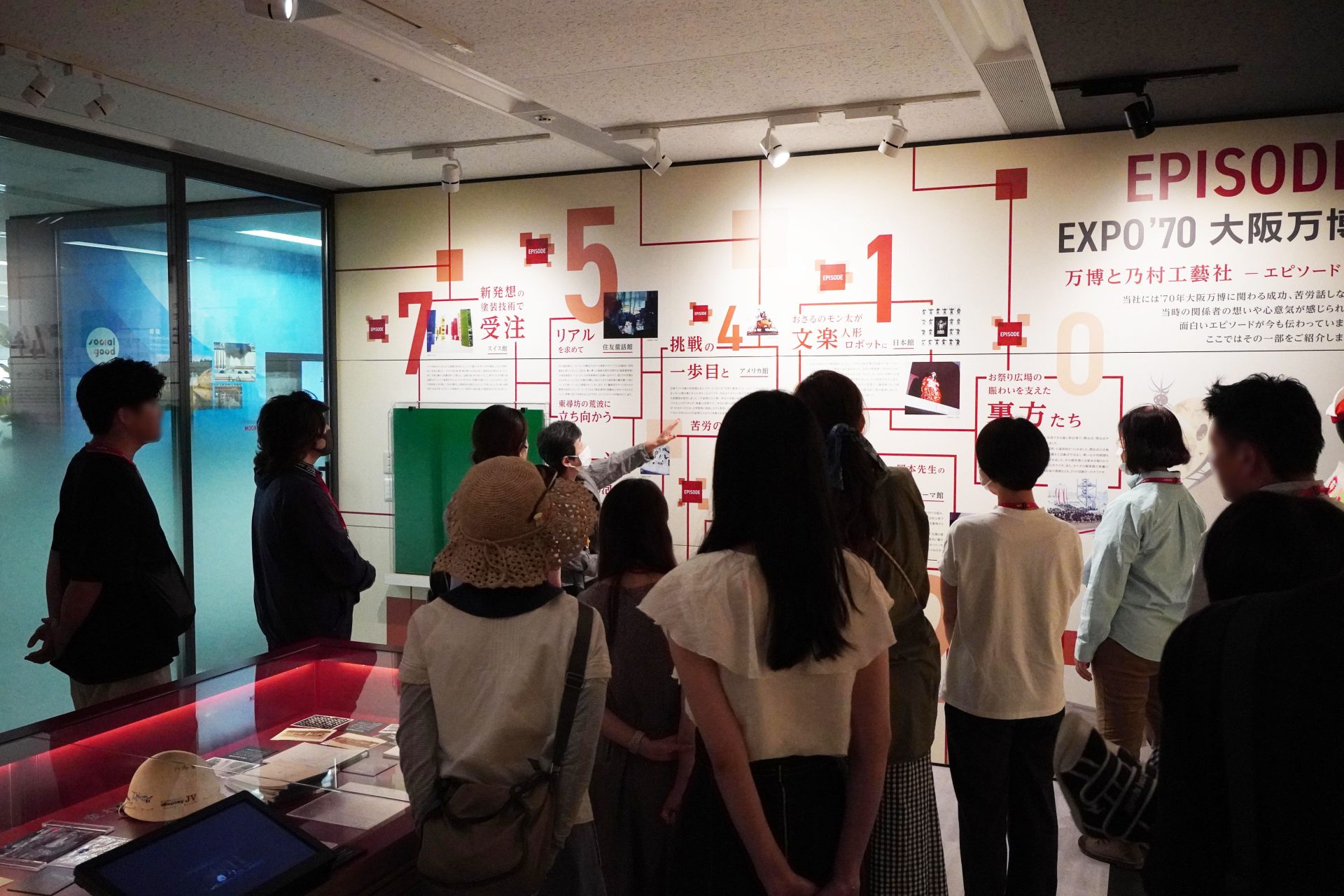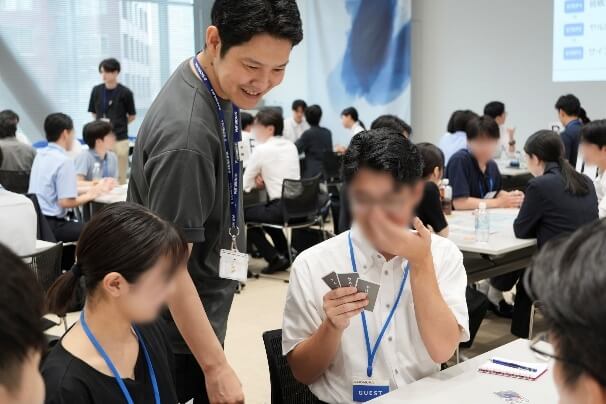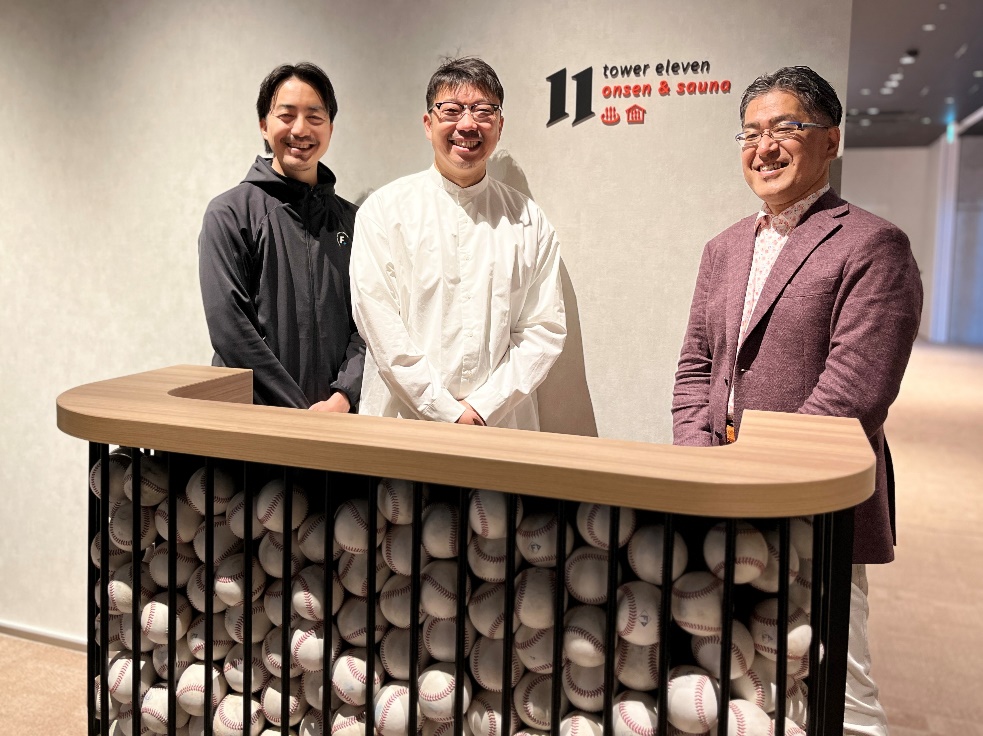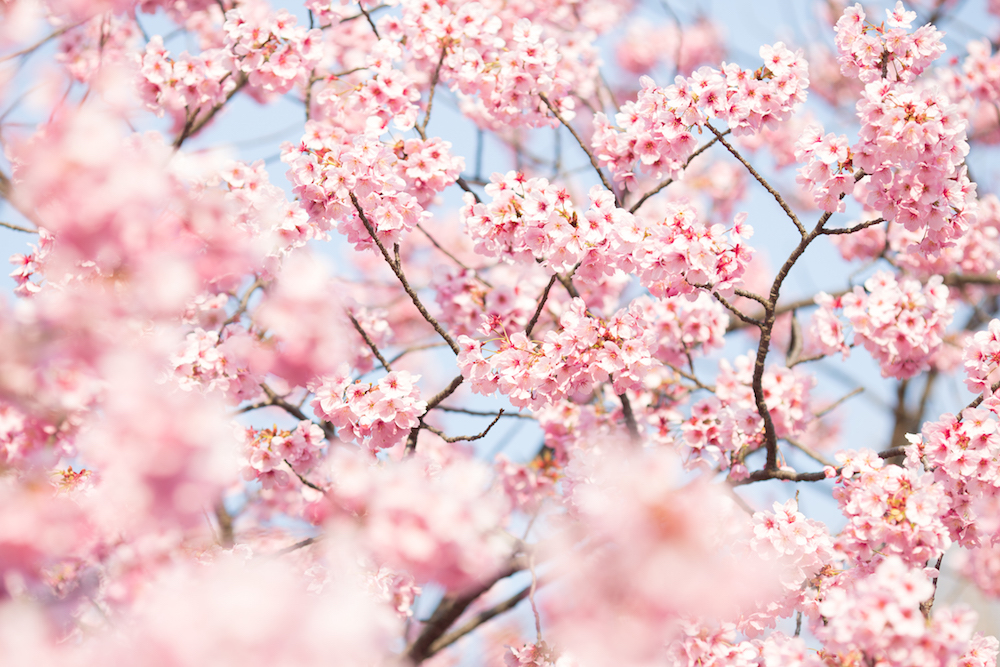
Both Kabuki lovers and Kabuki beginners want to experience it! Kabuki no Hikari Flower x Kabuki! An art space where you can feel spring
2021/03/19- text and edit by
- Ai Ichikawa
Hello, this is Ai Ichikawa, a planner who loves Japanese culture.
The number of warm days has increased, and cherry blossoms have been announced to bloom in various places, and spring has finally arrived.
It's still difficult to enjoy cherry-blossom viewing due to the ongoing corona crisis, but I was invited to a private viewing of an exhibition themed on my favorites, "flowers" and "Kabuki," and went to the Yoshizawa Garden Gallery in Ichikawa City, Chiba Prefecture. I was.
The name of the exhibition is “Kabuki with Flowers”. Unfortunately, due to the extension of the state of emergency, the exhibition was closed to the general public.
 From the left, Fujimaki, Morita, and Ichikawa of NOMURA Co., Ltd. Ltd., and Mr. Iwata of Shochiku Co., Ltd., who guided us.
From the left, Fujimaki, Morita, and Ichikawa of NOMURA Co., Ltd. Ltd., and Mr. Iwata of Shochiku Co., Ltd., who guided us.
The Yoshizawa Garden Gallery, the exhibition venue, has a garden called Hyakujuen on a site of about 1,000 tsubo, where you can enjoy art along with the space of trees and flowers that color the four seasons. This time, in conjunction with the cherry blossom season, an exhibition that fused classics and digital was planned, centering on "Yoshitsune Thousand Cherry Trees", one of the three major Kabuki masterpieces.
What is “Yoshitsune Thousand Cherry Trees”?
Let me briefly introduce “Yoshitsune Senbonzakura” here. After Minamoto no Yoshitsune was shunned by his older brother Yoritomo and left the capital, the three military commanders of the Taira clan, Tomomori, Koremori, and Noritsune, who were thought to have been killed, once again challenged Genji, leading to the defeat of Yoshitsune. It is a popular program in which various dramas unfold while involving the mistress Shizuka Gozen and ordinary people.
In this exhibition, as scenes with "flowers", "Plum colors" "Torii" and "Cherry blossoms" "Mt.Yoshino" were mainly taken up.
"Torii-mae-no-ba" is the scene in which Yoshitsune and his party, who had fled to Kyushu, arrive in front of Fushimi Inari. Yoshitsune, wanting to avoid a fight with his brother, reprimands Benkei for starting a battle with Yoritomo's assassin at the Horikawa Imperial Palace, where he lived in Kyoto. Benkei joins Yoshitsune through Shizuka Gozen's intercession, but since Shizuka Gozen is a woman, he is not allowed to accompany Yoshitsune.
Yoshitsune entrusts Shizuka Gozen, who feels lonely, with a "Hatsune Tsuzumi" made from the skin of a couple of foxes. Shizuka Gozen, who was left behind, was saved by Yoshitsune's vassal, Tadanobu Sato, when the pursuers came and became dangerous. Tadanobu is bestowed with the name and armor of Genkuro by Yoshitsune, who has come back, for his achievements in helping Shizuka Gozen. "Mt.Yoshino" is a scene in which Shizuka Gozen and Tadanobu admire Yoshitsune and travel to Mt. Yoshino where Yoshitsune is said to be hiding. In fact, this Tadanobu is the child of the fox couple who were made into "Hatsune no Tsuzumi".
Let's go to the Kabuki stage
The first exhibition room welcomes you with reproductions of the stages of "Torii-mae-no-ba" and "Yoshino-yama-no-ba".
You can see the costumes, props, and props used in the actual stage up close.
 "Place in front of the torii" Left: Sato Shirobei Tadanobu (actually Genkuro Fox) Right: Musashibo Benkei
"Place in front of the torii" Left: Sato Shirobei Tadanobu (actually Genkuro Fox) Right: Musashibo Benkei
The costumes and props were faithfully dressed down to the smallest detail. Unlike the kimono that hangs directly on a kimono hanger rack (Ikō: a hanger rack for kimonos), it gives a sense of vitality and is full of the presence of the stage. It's like having a real actor on the spot.
I believe that Kabuki costumes have the power to capture people's hearts in a non-verbal way. The beautiful colors and bold shapes are truly works of art.
When I was in college, I was the secretary-general of a Kabuki research group, and many of the foreign exchange students who participate in group theater performances say, "I saw pictures of gorgeous and beautiful Kabuki costumes, and that's when I started performing on stage." I wanted to see it,' he said. When I myself started watching Kabuki in elementary school, I used to stare at the costumes of the princesses through opera glasses without really understanding what was being said. I hope that the number of Kabuki fans will increase as more people see Kabuki costumes, not just in a closed space like this exhibition.
 "Yoshinoyama" Center: Hatsune's hand drum, Tadanobu's armor given by Yoshitsune Right: Shizuka Gozen
"Yoshinoyama" Center: Hatsune's hand drum, Tadanobu's armor given by Yoshitsune Right: Shizuka Gozen
And the props are also colorful and attractive. Taisuke Nomura, NOMURA Co., Ltd. founder of Nomura Kogeisha, started out in the world of stage props for theatrical performances, so I feel a connection with Kabuki. As a flower lover, the things that caught my eye were the cherry and plum props. It was made by adjusting the size so that it can be seen from the audience. I entered the foot of the cherry blossoms and enjoyed a pair of early cherry blossom viewing.
Rediscover the charm of Kabuki with the power of digital technology
The second exhibition room was titled"Kabuki no Hikari"and was designed to allow visitors to experience the "Torii-mae" and "Yoshino-yama" using the latest technology.
When you approach the "Torii-mae-ba" with a lantern, Tadanobu Sato appears from somewhere and the story begins.
By being a shadow play, the movements are emphasized even more than when the actor in costume is in front of you, and you will be fascinated.


The cherry blossoms at your feet sway as you walk through Yoshinoyama. While enjoying Shizuka Gozen's dance, the fox, which is the key to the story, appears when you hit the drum projected on the hologram in your hand. Kabuki experience using beautiful digital art can be enjoyed without explanation, so it will become more popular in the future as one of the entrances to kabuki appreciation from children to adults, and regardless of whether it is domestic or overseas. Is not it.

Returning to the real world from the digital production, there were props from the scene "Tomomori Ikari" from the famous scene "Daimotsu no Ura no Ba" depicting Tomomori Taira's heroic final moments. Kabuki stage props are defined as "sets" that are fixed and do not move, and "props" that are worn, held in the hand, or movable. Fujimaki from our company posed for a pose while being careful not to touch the valuable exhibits. In the actual scene, Tomomori Taira wraps a rope around his body and lifts the anchor.
A behind-the-scenes tour that will delight Kabuki fans
Taking advantage of the Japanese-style room in the back of the third exhibition room, it was possible to enjoy an exhibition of Oshiguma and a tour of the actors' dressing rooms.

Oshiguma is a copy of kumadori (Kabuki makeup) pressed against paper or habutae after the actor's performance is over. Since no one is the same and you can't get more than one, Kabuki fans will treasure the Oshiguma of their favorite actor as a memento of the stage. When I can get it, I will definitely try to make it into a hanging scroll.

There are two armors lined up in the alcove. This armor was worn by Taira no Tomomori, who had changed into Ginpei, the owner of Funayan Tokaiya, in order to clear his grudge. Thing. Yoshitsune's identity was discovered, and Tomomori, who was outnumbered, threw himself into the sea using an anchor as a weight. The bloody armor on the right is Tomomori's dying costume. You can see that it was a fierce battle.
The hanging scroll displayed on the left side of the armor is said to match the theme of the exhibition, and the painting of peach blossoms was selected after consulting with the props. Even in the actual theater, the actors spend a month in the same dressing room, so it seems that they burn incense and decorate their favorite hanging scrolls and ikebana. .

Lastly, we watched a video of the work done by Shozaburo Ichikawa, the ambassador of this exhibition. The transformation from male to female and beyond age is unique to Kabuki, and I am impressed no matter how many times I watch it.
Kabuki Exhibition as the Entrance to Kabuki Appreciation

After immersing myself in the world of Kabuki, I stepped outside the gallery to enjoy the early blooming cherry blossoms. It was truly a “kabuki exhibition colored by flowers” from beginning to end.
Through the exhibition as a whole, I was reminded that each and every element of Kabuki, such as costumes, props, and makeup, is art. Attempts like this exhibition will expand the base of kabuki fans as an opportunity to experience the charm of kabuki outside the theater.
Performances are being held at Kabukiza and other theaters while taking measures to prevent infection.
The experience-based exhibition deepened my love for Kabuki, so I'd like to put on a mask and go see a theater sometime soon.
Reference: Kabukinohikari
https://www.shochiku.co.jp/pj/kabukinohikari/
Like this article?
